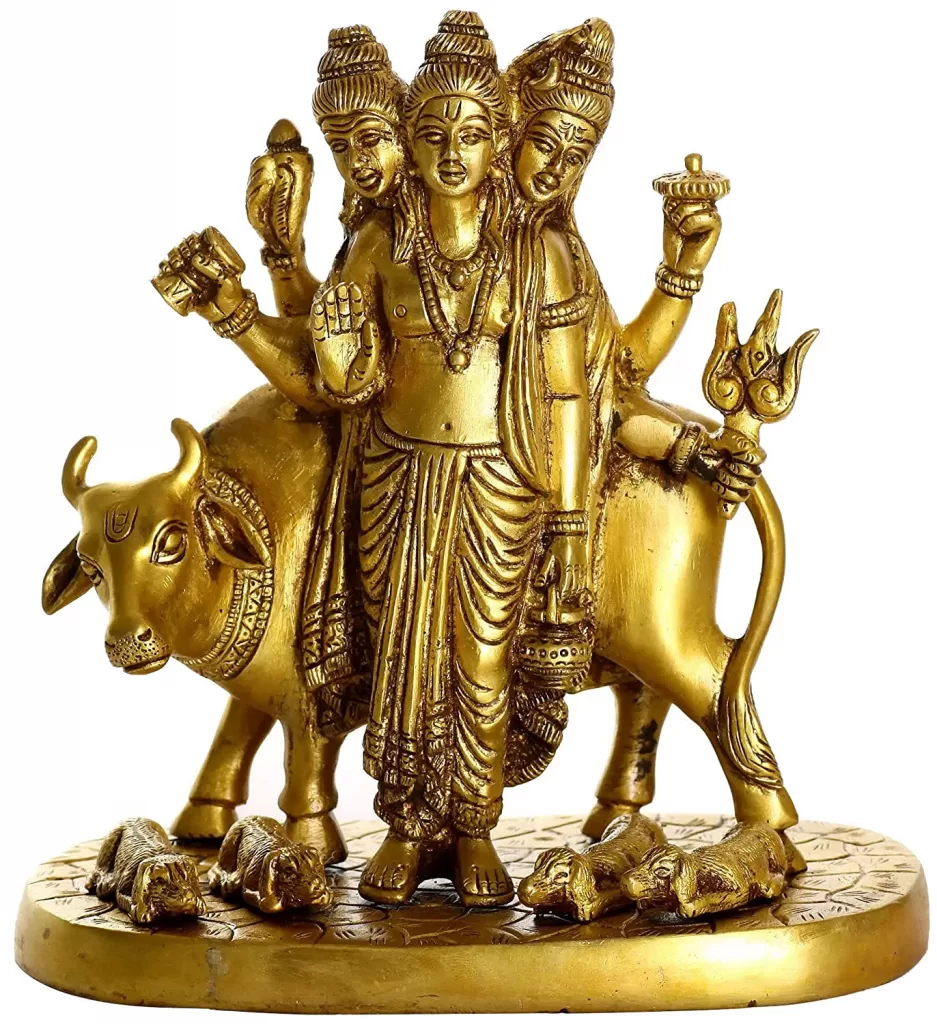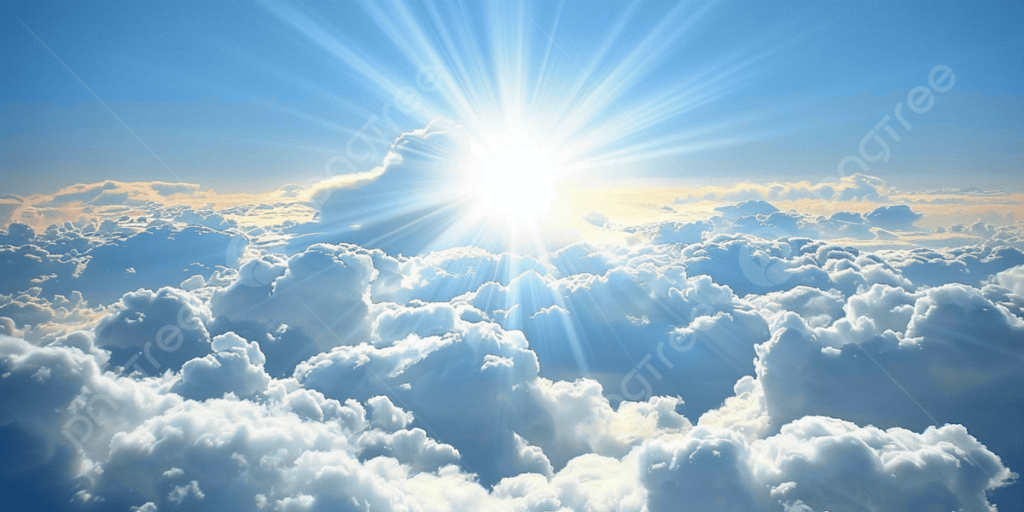Hinduism is a big religion that is practiced all over the world, and Trinity is the fundamental element or the foundation of this religion named Hinduism, which is also considered one of the oldest religions in the world. It started on the Indian subcontinent and has many different philosophical, religious, and ritual practices.
Even though the word “Hinduism” was first used by British writers in the early 1800s, it refers to a very long history of books and activities, some of which date back to at least 2000 BCE. If the Indus Valley civilization (3rd–2nd millennia BCE) serves as the earliest source of these teachings, Hinduism is the oldest existing religion on Earth.
Rituals and the visual and performing arts were also important in spreading the religion, but the many sacred texts written in Sanskrit and local languages helped spread the religion to other parts of the world. Around the fourth century CE, Hinduism began to dominate Southeast Asia and remained dominant for over a thousand years.

Hindu Mythology
Hindu mythology comprises various stories from different Hindu texts, including the four Vedas (Rigveda, Samaveda, Yajurveda, and Atharva Veda), the Mahabharata, the Ramayana, the Puranas, etc. These stories contain a variety of characters and gods. According to Hindu mythology and stories, there are 33 crore gods. These gods are most often independently worshipped or, at times, worshipped in groups within the Hindu religion. Some communities have certain gods that they worship more than others.
The main three gods, or “big three gods,” of these Hindu stories and myths are known as the Trinity or Trimurti. Trimurti is a Sanskrit term commonly used in Hindu texts that directly translates to “three heads” in the English language. These are three separate gods that are depicted together in one body with three different heads.
Trinity: Bringing Nature’s Loop Full Circle
Brahma, Vishnu, and Mahesh are three Hindu gods who represent the three parts of the natural life cycle: creation, maintenance, and death. Together, they are known as the Triumvirate.
Our understanding of nature and our place in the natural world may be influenced by how Hindu philosophy conceptualizes nature and the importance of all three components working together to maintain harmony in the cosmos.
According to what we read in the news today, it could appear that the world is about to end and that we are caught in a horrific circle of destruction. Climate change specialists foretell our coming doom, and others claim that the period of destruction known as the Kali Yuga is currently upon us. As gloomy as this image may appear, it simply represents one side of nature’s simultaneous and triangular operations.
Srishti: creation in action
One of the most prized skills in contemporary culture is creating. Because of their talent to create, authors, inventors, and designers hold a special place in human civilization. The act of creation is revered as magical, and recent theories of manifestation have also highlighted how all life has this innate creative power.
It is difficult for us to claim that the creative power within nature has been extinguished, even though we lament the extinction of species and the deterioration of our environment. The evolution of organisms continues even as the environment around us changes naturally.
According to current events, Brahma, the deity to whom Hindus attribute creation, is not the most significant deity of the Trinity. He might be the creator, but creation does not come from him. He is thought to emerge from Vishnu, the second god’s navel.
Sthiti: Sustainability: Preservation
Lord Vishnu is the one who upholds, guards, and preserves. We may claim that he is the one who ensures the “sustainability” of the earth. Most people are familiar with Vishnu through his avatars, Rama and Krishna, but he is also supposed to have assumed a number of other forms—from a fish to a pig to a human—to defend the planet Earth at her most perilous times.
These forms follow an evolutionary tendency. He is passionate about protecting the Earth from a flood that is brought on by “bad” people like Lord Varaha. One may argue that in our contemporary search for sustainability, we are turning once more to Vishnu in the hopes of figuring out how to protect life on the planet. How exactly does Vishnu assist in this?
When you look at the symbolism in the Dashavatara stories, you can see that his methods for defending life are very diverse. The Vishnu principle brings order to a confused human world by balancing out the uneven distribution of power, stopping a cosmic flood, and explaining the “dharma” principles to people.
A scripture called the Vishnu Sahasranama talks about this idea of sustainability in all of its parts and in a thousand different ways. In a world with a lot going on, it’s important to know how to deal with different forces and be ready to do so. This complexity is embraced by Vishnu, who is Bhugarbho and who is the one who carries the Earth in his womb.
His many names, like Bhu-bhrte, which means “one who maintains the earth,” Visvadharam, which means “the supporter of the universe,” Mahidharo, which means “the supporter of the earth,” and Dharadhara, all point to the fact that he keeps the earth going.
Vinashanam: Transformation; Dissolution
Mahesh, the third person in the Trinity, is also known as Mahadeva, the great Lord. He is regarded as the most powerful of the three. He is also the one who transforms, and he might have to destroy in order to do so. He is known for his terrible anger and the dance he does when he is in his fierce form, Rudra. This dance starts the cycle of creation, maintenance, and destruction.
To understand the role of destruction in nature’s cycles, you need to know that “permanence” is not natural. Everything in nature is in constant flux; energy transforms matter and vice versa. The fact that people don’t like change and can’t deal with death or celebrate the fact that things change shows how attached we are to life.
Shiva, which is another name for Mahesha, is said to be the source of creation. Both Brahma and Vishnu come from Shiva, which emphasizes the idea that change is the basis of both creation and survival.
In this sense, sustainability is a continuous flow of energies that maintains a dynamic equilibrium through change, rather than an immutable permanence. Deeper environmental issues are brought about by man-made things that don’t break down because they block this energy flow and, ultimately, this attachment to “permanence.” Instead, biodegradability is a more environmentally friendly phenomenon.
The Inner meaning and the significance of Trinity

The most important thing to learn from the Trimurti or trinity is that all three parts of the cycle—Creation, Sustenance, and Dissolution—are needed to finish it. We may try to avoid things that make us feel uncomfortable, but if we don’t let things break down and die, we can’t expect new life to grow in its place. The three processes happen continuously and at the same time, not one after the other. This means that life forces and energy just change from one form to another.
Typically, a caterpillar that vanishes into a cocoon emerges as a butterfly. Hinduism is an important world religion that has its roots in the Indian subcontinent and is made up of many different intellectual, theological, and ritual traditions. The name “Hinduism” was made up by British writers in the early 1800s, but it actually refers to a huge body of literature and practices, some of which date back to the second millennium BCE or even before.
If the Indus culture (3rd–2nd millennia BCE) functioned as the first source of these teachings, Hinduism would be the oldest religion still practiced. Its many sacred books, written in Sanskrit and other languages, helped spread the religion to other parts of the world, even though rituals and the visual and performing arts were also very important in this process. In the fourth century CE, Hinduism started to rule Southeast Asia, and it remained in power for more than a thousand years.
The Three Forms which comprise the Trinity
Brahma, Vishnu, and Shiva are the three members of the Hindu trinity or Trimurty The Supreme Spirit or Universal Truth, also known as Brahman, is represented by three forms: Brahma (the creator), Vishnu (the preserver), and Shiva (the transformer and destroyer), each of which corresponds to a particular cosmic function.
Because Hinduism is a collection of diverse traditions and beliefs, scholars believe that Brahma-Vishnu-Shiva was an attempt to bring the concept of Brahman and its multiple perspectives on the Divine into harmony.
Shiva is revered as the first yogi, or Adi yogi, of the three forms of Brahman. This gives him a special place in yogic traditions. Shiva is a symbol of the balance between being aware and being happy, as well as the way yoga calms people as a whole.
Union with the Trinity, which is a form of Brahman is the ultimate goal of yogic philosophy and practice. Worshiping the trinity of Brahma, Vishnu, and Shiva is extremely uncommon among people. Hindus, on the other hand, often think of one of the three as their ultimate god and worship the other two as different parts of their main god. For example, Vaishnavism says that Vishnu is the most important god, while Shaivism says that Shiva is the most important god. Fewer people than most revere Brahma as their supreme god.
The Trimurti, or Hindu trinity, is composed of Brahma, Vishnu, and Shiva. Three forms, each corresponding to a different cosmic role, are used to depict the Supreme Spirit or Universal Truth, also known as Brahman: Brahma (the creator), Vishnu (the preserver), and Shiva (the transformer and destroyer).
Scholars think Brahma-Vishnu-Shiva was an attempt to bring the idea of Brahman and his many perspectives on the Divine into harmony because Hinduism is a collection of various traditions and beliefs.
Shiva one of the Trinity has a special place in Yogic traditions
In yogic traditions, Shiva has a special place because he is seen as the first yogi, or Adi yogi, of the three forms of Brahman. Shiva also represents the harmony between awareness and bliss, as well as the generally relaxing benefits of yoga practices.
The ultimate aim of yogic doctrine and practice is union with Brahman, who is personified as the Trimurti. The Trimurti of Brahma, Vishnu, and Shiva is hardly ever worshipped nowadays. As opposed to this, Hindus often see one of the three as their supreme deity and worship the others as different manifestations of their main deity. For example, in Shaivism, Shiva is the most important god, while in Vaishnavism, Vishnu is the most important god. Comparatively few people worship Brahma as the highest deity.
Prajapati the goddess in all three forms- Part of the Trinity
We have already seen that the three gods are associated with the creation, preservation, and destruction of the world. The gods are called Brahma, Vishnu, and Mahesh. However, another theory according to Vedic mythology points out that it was also believed that Prajapati was the one who created and guarded the entire cosmos. On the other hand, Brahma is traditionally regarded as the universe’s sole creator.
Brahma (Creator) A Trinity

Worship of Brahma began in the age that followed the Vedic period, which is now referred to as the post-Vedic era. It is stated that by the 7th century, he had fallen into obscurity due to his declining popularity. Others argue that it was just because people started worshipping other gods and deities more, but there are many who believe that it was due to a falsehood that was spoken.
He is frequently shown with four heads, hands, and a long beard that is white in color. It is stated that his four heads each represent one of the four Vedas and that they look in the four cardinal directions of the world: north, south, east, and west. It is stated that he birthed his kids from his own consciousness; as a result, his offspring are referred to as Manasputras (Manas refers to the mind, and Putras means children or sons). In India, there are not many places of worship dedicated to the god Brahma.
Vishnu (Preserver) A Trinity

It is widely held that Vishnu is the one responsible for maintaining and guarding the cosmos. He is the God who presides over the administration of everything in the cosmos at the present time. Visnu is a Sanskrit word that literally translates to “the pervader.” His name comes from this phrase. He is also known by the name Hari and Narayana. In certain mythologies and traditions, the guardian of the cosmos is depicted as the god Vishnu, while in others, it is the goddess Devi or another form of a goddess that plays this role. It is believed that Lord Vishnu is a component of the Trinity
In legends and mythology, he is frequently shown alongside his consort, the Goddess Lakshmi (sometimes spelled Laxmi), who is known as the Goddess of Wealth and Financial Prosperity. She is considered to be on the same level as Lord Vishnu, who is also known as Lakshmikanta (in Sanskrit, Kanta means “husband”).
It is believed that Lord Vishnu has had a total of ten different incarnations, also known as avatars. The names Lord Krishna and Lord Rama are probably the most familiar of the 10 names. In works of art, he is typically portrayed as having a blue or black skin tone and relaxing on a serpent named Shesha. Additionally, the Goddess Lakshmi is frequently shown seated nearby.
Mahesh (Shiva) (Destroyer) A Trinity
Shiva, who is known as “the destroyer of the world,” is also called “Mahesh.” He is also regarded as the “God of all Gods,” the “Great God,” etc. Lord Shiva is thought to be a mix of gods and deities from both the Vedas and other religions. He also has some completely non-Vedic origins. Some accounts indicate that the term Shiva means “the fortunate one,” while another asserts that it derives from the Tamil word meaning “red.”
Lord Shiva is often depicted with blue skin or a blue spot on the throat. This is thought to be a side effect of his poisoning. He is seen with a snake around his neck, the moon in his hair, and the river flowing from his hair. His wife is Goddess Parvati, and he had two sons, Lord Ganapati, and Lord Kartik. He is worshipped all across the country in many ways.
Some worshippers perform “Tandava,” which is believed to be the dance form of Lord Shiva. Numerous temples and sites of worship are dedicated to him. The popular ones in India include Amarnath, Somnath, and others.

Disclaimer:
The author’s views are his or her own. The facts and opinions in the article have been taken from various articles and commentaries available in the online media and Eastside Writers does not take any responsibility or obligation for them.
Note: Contact our Writers at www.eastsidewriters.com for writing Blogs/Articles on any niche. We have experts in various domains from Technology to Finance and from Spirituality to Lifestyle and Entertainment.







Pingback: Kedarnath-The Significance And The Key Reasons For Its Visit - Eastside Writers
Pingback: Explore 25 Lost And Forgotten Cities Of The World- Part 2 - Eastside Writers
Pingback: Know About Shiva - And Why Worshipped By Hindus Since Ages - Eastside Writers
Pingback: Is Narada A Sage, God, Trickster, Or God's Messenger- Discover The Truth - Eastside Writers
Pingback: Why There Are Almost No Temples For Brahma And Vishnu In Hindu Religion - Eastside Writers
Pingback: Know How Karma Can Influence Your Life Before It Impacts You
Pingback: The Majestic Balaji Temple: A Spiritual Journey to the Abode of Lord Venkateswara - Eastside Writers
Pingback: Unveiling the Cosmic Dance: A Deep Dive into the Enigmatic Shiva Tandav Stotram - Eastside Writers
Pingback: The Divine Architect: Crafting the Universe and Beyond As Per Ancient Hindu Texts - Eastside Writers